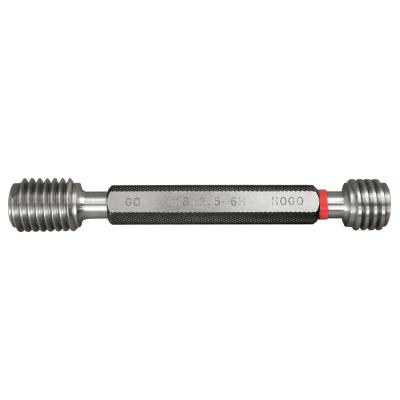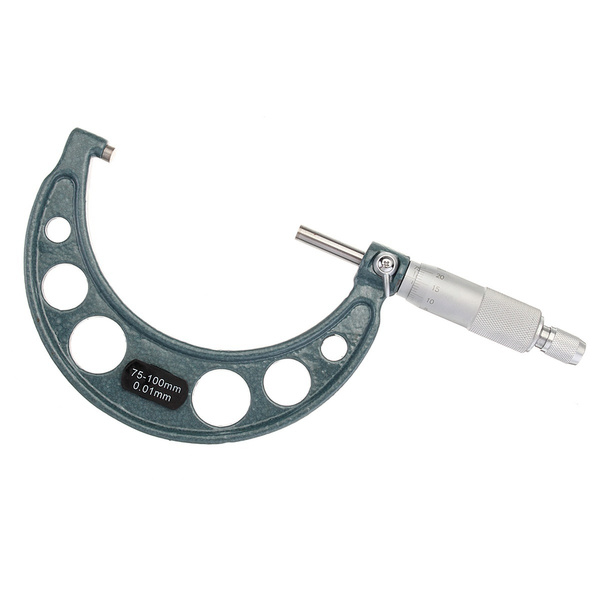High-Quality pull studs
High-Quality pull studs are essential components for CNC machining, ensuring accurate tool clamping and secure retention during high-speed operations. Choosing the right pull stud is crucial for optimal performance, minimizing downtime, and extending the lifespan of your CNC machine and tooling.
Understanding Pull Studs
What is a Pull Stud?
A pull stud, sometimes called a retention knob, is a flanged fastener that screws into the top of a tool holder and mates with the machine tool's drawbar. The drawbar then pulls the tool holder firmly into the spindle. The primary function of a high-quality pull stud is to provide a secure and reliable connection between the tool holder and the CNC machine spindle.
Types of Pull Studs
Different CNC machines and tool holders require different types of pull studs. The most common types include:
- MAS 403 BT: A widely used standard, particularly common in Japanese-made machines.
- CAT V Flange: Another common standard, often found in North American machines.
- DIN 69872: A German standard, often associated with SK tool holders.
- ISO 7388-1 (formerly DIN 69871): An international standard also associated with SK tool holders.
- ANSI/ASME B5.50: The standard specifying dimensions for CAT flanges.
It is critical to select the correct pull stud type for your specific machine and tool holder to prevent damage and ensure proper functionality. Always consult your machine and tool holder manuals for compatibility information.
Key Features of High-Quality Pull Studs
Material
The material used in manufacturing a high-quality pull stud directly affects its strength, durability, and resistance to wear and tear. Common materials include:
- Alloy Steel: Offers high tensile strength and resistance to deformation. Often heat-treated for increased hardness.
- Carbon Steel: A more economical option, but generally not as durable as alloy steel.
- Stainless Steel: Provides excellent corrosion resistance, suitable for environments where coolant exposure is significant.
Hardness
Hardness is crucial for preventing wear and tear, especially in high-speed machining applications. Look for pull studs with a hardness rating of at least HRC 56. Hardness testing, such as Rockwell C scale (HRC), ensures the pull stud can withstand repeated stress without deformation.
Precision Machining
Precise dimensions are vital for ensuring a proper fit and secure connection. High-quality pull studs are manufactured using CNC machining processes to achieve tight tolerances and accurate dimensions. This precision reduces the risk of runout and vibration, improving machining accuracy and surface finish.
Surface Finish
A smooth surface finish minimizes friction and wear between the pull stud and the drawbar. Surface treatments like black oxide or phosphate coating can also enhance corrosion resistance. A good surface finish also facilitates easier installation and removal.
Thread Quality
Accurate and clean threads are essential for a secure and reliable connection. Inspect the threads carefully for any imperfections or burrs before installation. Threads that are not properly formed can lead to loosening or even breakage under stress.
Factors to Consider When Choosing a Pull Stud
Machine Compatibility
As mentioned earlier, different CNC machines use different types of pull studs. Verify the correct type for your machine before making a purchase. Referring to the machine's manual or consulting with a tooling expert from Wayleading Tools (www.wayleading.com) can help ensure compatibility.
Application Requirements
Consider the specific demands of your machining application. High-speed machining, heavy cutting, or the use of aggressive coolants may require more robust pull studs made from premium materials. Consider the cutting forces and speeds you will be using.
Budget
While it's tempting to opt for the cheapest option, investing in high-quality pull studs can save you money in the long run by reducing downtime, minimizing tooling costs, and improving machining accuracy. Balance your budget with the long-term benefits of a reliable pull stud.
Installation and Maintenance
Proper Installation
Always follow the manufacturer's instructions for installing the pull stud. Over-tightening can damage the threads, while under-tightening can lead to loosening and vibration. Use a torque wrench to ensure proper tightening according to the specified torque value.
Regular Inspection
Inspect pull studs regularly for signs of wear, damage, or corrosion. Replace any pull studs that show signs of deterioration. Regular inspection prevents unexpected failures during machining operations.
Cleaning and Lubrication
Keep pull studs clean and lubricated to prevent corrosion and ensure smooth operation. Use a suitable lubricant that is compatible with the materials of the pull stud and drawbar.
Troubleshooting Common Issues
Pull Stud Loosening
If pull studs are frequently loosening, check the following:
- Incorrect Torque: Ensure the pull stud is tightened to the correct torque specification.
- Damaged Threads: Inspect the threads on both the pull stud and the tool holder.
- Vibration: Excessive vibration can contribute to loosening. Address any vibration issues with your machine.
Pull Stud Breakage
Pull stud breakage can be caused by:
- Over-Tightening: As mentioned before, over-tightening can weaken the pull stud.
- Material Fatigue: Repeated stress can lead to material fatigue and eventual breakage.
- Incorrect Material: Using a pull stud made from an unsuitable material for the application.
The Importance of Sourcing from a Reputable Supplier
Choosing a reputable supplier like Wayleading Tools (www.wayleading.com) is crucial for ensuring you receive high-quality pull studs that meet industry standards. Reputable suppliers provide detailed specifications, quality control documentation, and reliable customer support.
Conclusion
Selecting the right high-quality pull studs is an investment in the performance, reliability, and longevity of your CNC machining operations. By understanding the different types of pull studs, key features, and factors to consider, you can make an informed decision and choose the best option for your specific needs. Don't compromise on quality – choose a reputable supplier and invest in pull studs that will deliver superior performance and peace of mind.
Disclaimer: This article provides general information about pull studs. Always consult your machine and tool holder manuals for specific recommendations. Wayleading Tools assumes no liability for any damages resulting from the use of this information.
Related products
Related products
Best selling products
Best selling products-
 Carbide Tipped Hole Cutter For Cutting Stainless Steel And Iron Or Steel Plate
Carbide Tipped Hole Cutter For Cutting Stainless Steel And Iron Or Steel Plate -
 Adjustable Tap And Reamer Wrench For Thread Cutting Tools
Adjustable Tap And Reamer Wrench For Thread Cutting Tools -
 Outside Micrometer Set Of Inch & Metric With Rachet Stop
Outside Micrometer Set Of Inch & Metric With Rachet Stop -
 F1 Precision Boring Head With Metric & Inch
F1 Precision Boring Head With Metric & Inch -
 Precision Dial Caliper Of Double Shock-Proof For Industrial
Precision Dial Caliper Of Double Shock-Proof For Industrial -
 HSS Metric & Inch Corner Rounding End Mill For Industrial
HSS Metric & Inch Corner Rounding End Mill For Industrial -
 Metric HSS Step Drills With Straight Flute
Metric HSS Step Drills With Straight Flute -
 Type E Oval Tungsten Carbide Rotary Burr
Type E Oval Tungsten Carbide Rotary Burr -
 Electronic Digital Height Gauge From 300 to 2000mm
Electronic Digital Height Gauge From 300 to 2000mm -
 Precision Micrometr Holder For Micrometer
Precision Micrometr Holder For Micrometer -
 Metric Thread Plug Gauge 6H Accuracy With Go & NO Go
Metric Thread Plug Gauge 6H Accuracy With Go & NO Go -
 Type E Heavy Duty Deburring Tool Set With Deburring Holder And Deburring Blade
Type E Heavy Duty Deburring Tool Set With Deburring Holder And Deburring Blade










